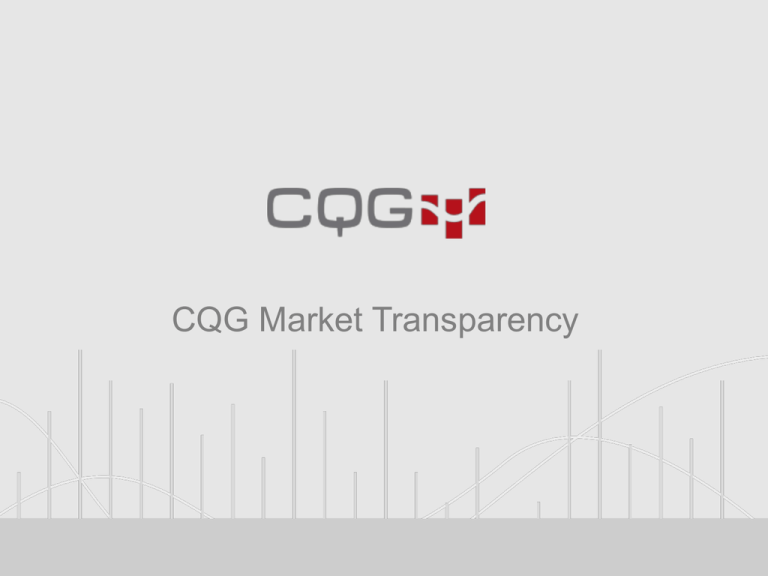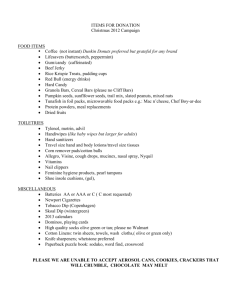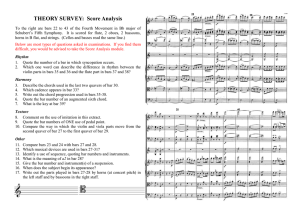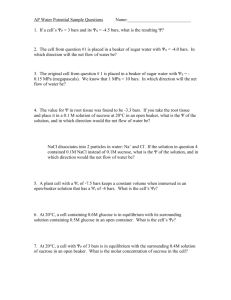
CQG Market Transparency
CQG has created innovative ways to use today’s
market transparency of electronically-traded
markets.
Four sets of tools are available:
• TradeFlowTM Charts and Studies
• Aggregated TradeFlow Charting
• Pre-Trade Analytics
• Order Ticker
Section 1: TradeFlowTM Charts and Studies
TradeFlow charts detail who the aggressor is, the buyer or the seller.
TradeFlow bars’ attributes:
• The high and low of the individual TradeFlow bar are the best bid and
the best ask price.
• The TradeFlow bar is color-coded to show the percentage of volume
executed at the bid (selling) and at the ask (buying) prices.
• The brightness of the color-coding and the width of the TradeFlow
bars are based on the current TradeFlow bar’s executed volume
relative to the recent traded volume.
TradeFlow Bars
The TradeFlow bar is a
graphical representation of
traders’ action at the best bid
and best ask price in the
exchange’s order book.
The TradeFlow bar’s low is the
best bid and the high is the
best ask price.
On the last TradeFlow bar in
this example, 461 contracts
traded at the ask price and 62
contracts at the bid price. The
TradeFlow bar is 88% green.
The TradeFlow Volume study
separates the traded volume
at the ask (green histogram
bars) from the traded volume
into the bid (red histogram
bars).
Key Benefit:
Identify whether the last price was
generated by a buyer or a seller. For
example, the inside market may be climbing,
but traders are hitting bids and are selling
into the rally. You cannot see this information
on standard charts.
TradeFlow On-Balance Volume
TradeFlow On-Balance
Volume is a running sum of
trades at the ask minus trades
at the bid price. This is an
enhanced study compared to
the classic On-Balance
Volume line because TFOBV
measures true buying and
selling.
Studies can be added to
TradeFlow. Here, a
stochastics oscillator is applied
to the TradeFlow OBV line.
Key Benefit:
TradeFlow studies help identify
the trend of buying and selling.
TradeFlow Custom Studies
Elements of TradeFlow, such as
executed bid volume and ask
volume, can be the basis of
custom studies.
Here, two custom studies,
TradeFlow Cross and TradeFlow
Up Volume minus TradeFlow
Down Volume, are displayed.
This is the five-bar running sum of
trades at the ask price (green line)
versus the sum of trades at the bid
price (red line). Notice the peak in
buying when the market peaked.
This oscillator is the difference
between the two lines.
Key Benefit:
Design your own studies from elements of
TradeFlow to monitor the market information
you want.
Section 2: Aggregated TradeFlow Charting
Aggregated TradeFlow Charts compress individual TradeFlow bars into
single bars, providing more information in the same screen. Up to 20 bars
can be aggregated.
There are three ways to aggregate TradeFlow bars:
• Aggregate by bars
• Aggregate by range
• Aggregate by smoothing
Aggregated by TradeFlow Bars
Here, aggregation by bars is set to
five TradeFlow bars. Every time five
basic individual TradeFlow bars are
built, then one aggregated
TradeFlow bar is completed.
Up to 20 TradeFlow bars can be
aggregated. Right-click on the
TradeFlow bar to set the
aggregation.
Key Benefit:
Support and resistance levels can be
easily identified.
Aggregation by Price Range
Here, aggregation by range is set to
three ticks - three ticks in price
range, not three ticks of traded
volume.
All TradeFlow bars have a high-low
range of three ticks.
A new aggregated TradeFlow bar is
not created until the high or low of
the aggregated TradeFlow bar is
violated.
Time is not a factor, therefore, when
the market is trading sideways, the
price action will often be compressed
into just a few TradeFlow bars. Still,
the trend and key price levels are
displayed.
Key Benefit:
More price action is compressed into the
TradeFlow bars, providing a better view of
the trend.
Aggregation by Smoothing
A proprietary algorithm smoothes
the TradeFlow bars.
The trend, as well as turning
points, are highlighted by this
aggregation technique.
Key Benefit:
Smoothing the TradeFlow bars reduces the
noise about the trend of the market. Longerterm trends are highlighted by this
technique.
Section 3: Pre-Trade Analytics
Pre-Trade Analytics track traders’ actions in the exchange’s order book
up to four price level queues away from the best bid and best ask prices.
Four studies are available:
• DOMTracker
• DOMTracker Oscillator
• DOMActivity
• Older Orders Ratio
DOMTracker
The DOMTracker calculates
the sum of resting bids (the
green line) four levels below
the best bid price and the
sum of resting offers (the red
line) four levels above the
best ask price in the order
book.
You can monitor whether
traders are increasing their
resting orders on either side
of the market as the market
makes its swings.
Key Benefit:
Make better trading decisions by monitoring
traders’ actions in the order book.
DOMTracker Oscillator
The DOMTracker Oscillator is the
difference between the readings
of the resting bid orders and the
resting ask orders from the
DOMTracker study.
Use the DOMTracker Oscillator to
identify shifts in traders’ changes
to their resting orders in the
exchange’s order book.
Key Benefit:
Access more information about resting order
changes in the order book.
DOMActivity
The DOMActivity study
tracks changes in the
resting bid and ask orders.
The changes can be
monitored based on actual
contract or tick size.
Key Benefit:
Watch for changes in activity to see if
traders are changing their working orders.
Older Orders Ratio
The Older Orders Ratio uses
a trader-set time that orders
have been resting in the order
queue.
The default time is set to sixty
seconds. The ratios climb
when more orders have been
in the queue for longer than
sixty seconds.
Key Benefit:
Follow whether traders are letting orders
rest or are becoming more aggressive in
their trading.
Section 4: Order Ticker
The Order Ticker offers a detailed display of traders’ actions at the
inside market and in the order book up to ten price levels away,
depending on the exchange.
This section will cover:
• Details of the Order Ticker display
• The Order Ticker preferences
• Stacked Order Tickers
Key Benefit:
See trades executed and orders placed,
canceled, and modified.
Order Ticker Details
The green boundary
indicates the inside
market climbed.
The red boundary
indicates the inside
market dropped.
Order canceled
Inside market dropped
Order modified
Trades at the bid
have bright red
backgrounds.
Trades at the ask
have bright green
background
colors.
Order modified
Orders placed have
light-colored
backgrounds.
Red down arrow
indicates the inside
market dropped.
Green up arrow
indicates the inside
market climbed.
Stacked Order Tickers
This example displays two
order tickers:
• The top Order Ticker
displays orders placed
greater than 50 up to 100
and trades executed
greater than 25 up to 50.
• The bottom Order Ticker
displays orders placed
greater than 100 and trades
executed greater than 50.
The amount of red in the two
order tickers implies traders
hitting bids and placing offers
in the order book.
Key Benefit:
Set up Order Tickers to track large traders
versus small traders.
CQG, Inc.
CQG, Inc. is the industry’s highest-performing solution to integrate market
data, technical analysis, and trade routing. CQG’s data coverage includes
futures, options, fixed income, foreign exchange, and equities exchanges
worldwide as well as debt securities, reports, and indices. Founded in 1980,
CQG is headquartered in Denver with sales and support offices worldwide.
For more information, visit www.cqg.com.
Customer Support:
• US 1 800-525-7082
• UK +44 (0) 20-7827-9500
• Australia +61 (0) 2-9235-2009
• France +33 (0) 1-74-18-07-81
• Germany +49 (0) 69-6677-7558-0
• Japan +81 (0) 3-3286-6633
• Russia +7 495-795-2410
• Singapore +65 6720-3165
Disclaimer
Trading and investment carry a high level of risk, and CQG, Inc. does not
make any recommendations for buying or selling any financial instruments.
We offer educational information on ways to use our sophisticated CQG
trading tools, but it is up to our customers and other readers to make their
own trading and investment decisions or to consult with a registered
investment advisor.
© 2009 CQG, Inc. All rights reserved worldwide.
CQG, DOMTrader, SnapTrader, TFOBV, TFOBVO, and TFVOL are registered trademarks of CQG, Inc.






